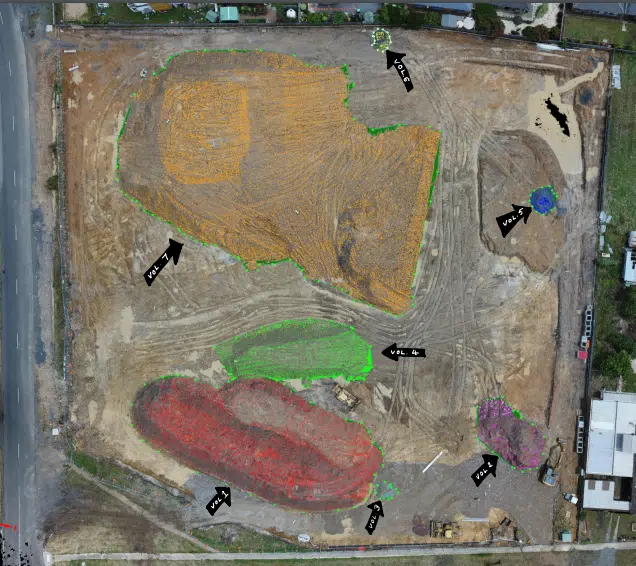
In the world of engineering and construction, where accuracy and efficiency are paramount, embracing innovative technologies is crucial for success. One such technology that has revolutionised the industry is reality capture. Reality capture refers to the process of capturing and creating precise digital representations of physical objects, environments, buildings and spaces.
It involves techniques such as 3D laser scanning, aerial mapping, photogrammetry, and airborne LiDAR surveys. These techniques enable the creation of detailed and highly-accurate point clouds, that can be converted into insightful digital maps, 3D models and 2D plans, improving project management and unlocking a host of benefits. In this blog post, we will explore the role of reality capture in engineering and construction, backed by leading research papers from reputed universities and journals.
Table of Contents

Improved Project Visualization and Planning
One of the key advantages of reality capture is its ability to provide an accurate and comprehensive visualisation of a project site, target area or environment. This is made possible using 3D laser scanners which help carry out a detailed 3D laser scanning survey of a construction site. These commercial scanners are also known as LiDAR scanners and they capture site measurements as millions of laser distance points as point cloud data.
This data is then used to create 3D sitemaps and models that improve project design and reduce on-site errors. This differs from photogrammetry that captures thousands of points based not on laser measurements but using visible light rays and positioning data to determine the camera position. There are variable differences in geometric accuracy and scale of the point cloud using both methods but either method can be applicable for your unique project requirements depending on a range of factors.
According to a research paper published in the Journal of Construction Engineering and Management, reality capture technologies facilitate a better understanding of project requirements, constraints, and complexities. The can help with site context, clash detection, resource planning and improve overall budget and cost management.
By creating highly detailed 3D models, stakeholders can visualise the project site and plan effectively, reducing the chances of errors and costly rework. This improved visualisation enhances communication and collaboration among team members, leading to more efficient decision-making processes and project delivery.
Enhanced Safety and Risk Mitigation
By creating accurate 3D models of the project site, engineers and safety professionals can identify potential risks, plan safety measures, and optimise workflows to minimise accidents and injuries. This proactive approach to safety management can save lives, reduce costs, and improve project outcomes.
Streamlined Construction Processes
The use of reality capture techniques can significantly streamline construction processes. A research paper published in the Journal of Computing in Civil Engineering emphasises the role of reality capture in improving construction workflows. By capturing accurate as-built information, including measurements, dimensions, and spatial relationships, virtual reality capture eliminates the need for time-consuming manual measurements and surveys.
Photogrammetry, a technique used in reality capture, plays a significant role in streamlining construction projects. By leveraging photographs and advanced algorithms, photogrammetry enables the creation of accurate and detailed 3D models of project sites and site features. This enables faster and more accurate planning, design, and timely construction processes. Contractors can identify clashes and conflicts before they occur, optimise resource allocation, and reduce costly delays and rework without site or project disruptions.
Accurate Quantity Takeoffs and Cost Estimation
Efficient Asset Management and Maintenance
Improved Collaboration and Communication
Precise Documentation and Historical Preservation
Preserving historical buildings and sites is a crucial aspect of architectural and engineering endeavours. Reality capture techniques offer a precise and accurate method of documenting and preserving these structures. Architects use digital visualisation technology to make “building 3D models” which involves laser scanning and formatting the end outcome as per the Architects specific workflow requirements.
A study conducted by the University of Oxford demonstrates the use of reality capture technologies in documenting heritage buildings. By capturing detailed 3D models, architects and conservationists can preserve the architectural details and intricate designs of historical structures down to finite levels of detail. This documentation serves as a valuable resource for future renovations, restorations, and research, ensuring the preservation of cultural heritage for generations to come.
Sustainable Construction Practices
Sustainability has become a key focus in the engineering and construction industry. Reality capture can contribute to sustainable construction practices in several ways. A research paper published in the Journal of Sustainable Development highlights the use of reality capture techniques for energy modelling and analysis.
By capturing accurate 3D models of buildings and sites, engineers can simulate and optimise energy consumption, identify energy-efficient design alternatives, and make informed decisions to reduce the carbon footprint of construction projects. This integration of reality capture with sustainable practices aligns with global efforts to create greener and more environmentally friendly built environments.
The Bottom Line
In conclusion, reality capture technologies have revolutionised project management in the engineering and construction industry. Through techniques such as 3D laser scanning, aerial land surveys, and LiDAR scanning, reality capture enables improved project visualisation, enhanced safety measures, streamlined construction processes, accurate quantity takeoffs and cost estimation, efficient asset management, improved collaboration and communication, precise documentation and historical preservation, as well as sustainable construction practices.
Backed by leading research carried out by tech firms, reputed universities and journals, it is evident that reality capture plays a pivotal role in unlocking efficiency, improving outcomes, and driving innovation in the field of engineering and construction. As part of the AEC industry in Australia, investing in technologies like commercial aerial land surveys and 3D laser scanning in Australia, helps to embrace the various reality capture technologies and skilled workforce to pave the way for success in this ever-evolving industry.
To gain further insights into reality capture and its applicability for your projects and business operations, contact the team at Avian Australia to learn how you can benefit from reality capture technologies.


